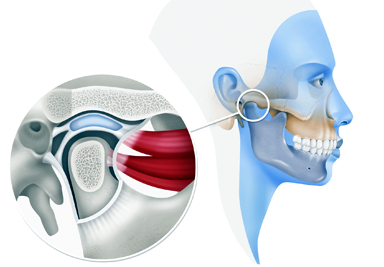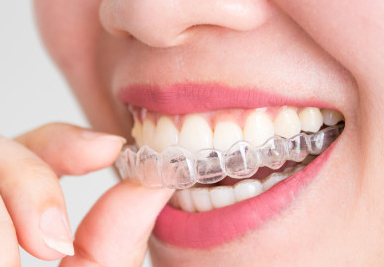


The chewing system is a complex unit capable of making physiological movements of closure, opening and laterality with the aim of performing the functions of chewing, swallowing and phonation apart from playing a very important role in facial expression. TMJ dysfunctions are problem related to the surface of condylar articulators, articular disc, ligaments and muscles which connect the lower jaw bone with the upper temporal bone which is part of the skull. They might be caused by genetic predisposition (hyperlaxity, malformation), arthritis, traumatic bone injuries with or without fractures, ankylosis, tooth misalignment, inadequate orthodontics, after a prolonged third molar surgery, parafunctional habits (bruxism), and in some cases the cause remains unknown. Stress and bad posture habits intensify TMJ disorders. Also poor diets and sleeping difficulties contribute to TMJ problems. Symptoms: - Noisy mouth opening and closure. - Difficulty in opening the mouth. - Inability to move the jaw. - Pain surrounding TMJ area. - Facial pain, headache, earache, neck and shoulders pain. - Clogged ears. - Muscle spasm. - Dental malocclusion. The patient normally goes to the office because of pains surrounding the TMJ area or near ears, cheeks, jaws, teeth, neck and shoulders (called trigger point). The treatment may vary from simple care to avoiding excessive mouth opening, hard food and big bites, applying moist heat or cold (depending on the case), taking prescribed medication, specific articulation exercises, using relaxation splint, and even treatments such as arthrocentesis, arthroscopy or corrective jaw surgery.
It is an oral parafunctional activity which is characterized by the grinding of the teeth and is typically accompanied by the clenching of the jaw. It is an unconscious habit that normally takes place during sleep or long-period concentration or study. Bruxism that occurs at night is impossible to control, but the one that happens during the day might be controlled and the temporomandibular articulation may be relaxed. I appears as a combination of causes: there is always a local factor (missing teeth, occlusal misalignment, premature contacts, etc.) together with a psychological factor (stress, tension, work or family problems). The consequences of this parafunctional activity: damaged, worn-out teeth, teeth or prostheses fractures, pain or dental sensitivity, dental movement, masseter muscle hypertrophy, TMJ problems, joint pains and sounds, dizziness, vertigo, acoustic problems, etc. Treatment: there are bite plates which help to relieve the symptoms but do not cure bruxism. Other options are Kinesiology therapy, applying moist heat, etc. Bite plates The bite plate is a plastic (hard acrylic) device that fits around occlusal and incisor surfaces of the upper teeth, and in some cases to the lower teeth, providing a uniform contact between the upper and lower arches. Its aim is to relocate the jaw that had taken a pathological position due to missing teeth, arch misalignment, premature contact, wear teeth, etc. It must be used every time the patient goes to sleep and also during the day when he/she is alone and with no need of speaking. It should be used 8 to 12 hours a day. It causes difficulties in speaking and swallowing food and drinks, that is why it should not be used when speaking or eating.
